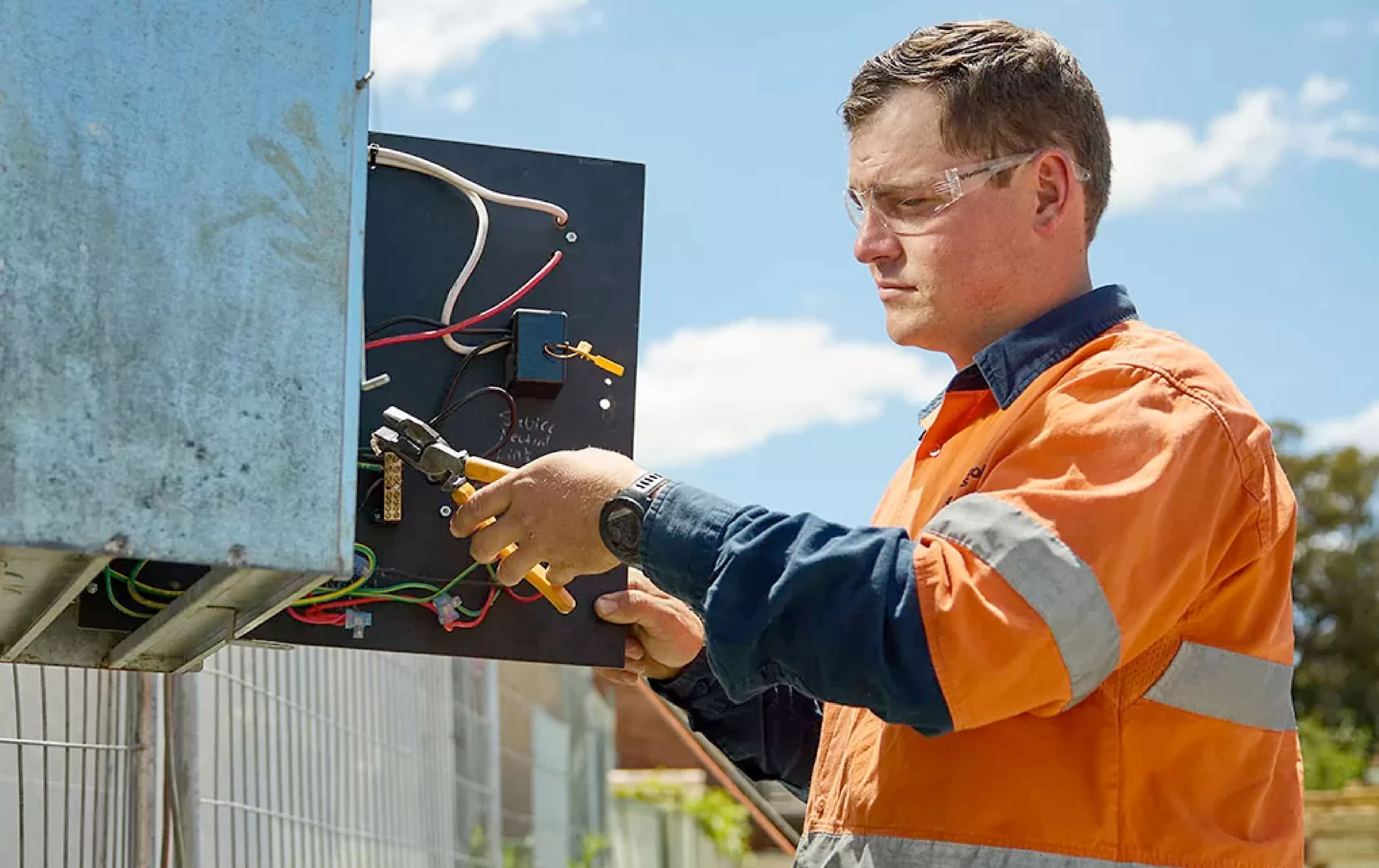News & Resources
If you’re building, renovating, or developing a property in NSW, you may need a temporary power supply. It’s a safe, compliant way to access electricity before your permanent electrical system is connected. In this article, we explain what temporary power supply is, when it’s required, and how to arrange installation.
What Is a Temporary Power Supply?
A temporary power supply (TPS) is a short-term electrical setup that provides power to a construction site, renovation project, or property during development. It usually consists of a weatherproof switchboard connected to the electricity network via overhead or underground cables.
These setups are built to meet strict NSW safety regulations and must be handled by a Level 2 Accredited Service Provider (ASP). TPS is essential for powering tools, lighting, equipment, and basic site operations before your permanent electrical connection is finalised.
When Is Temporary Power Needed?
Temporary power is often required in the following situations:
- Residential builds and knockdown-rebuild projects
- Major home renovations where permanent supply is disconnected
- Installing power before permanent infrastructure is in place
- Demolition or site clearing where construction is staged in phases
- Events or outdoor operations that require short-term electricity
Even small renovations may trigger the need for temporary power if safety concerns require isolating the main supply. Builders rely on it to ensure work can proceed without delay.
Who Can Install Temporary Power?
Only Level 2 ASPs are authorised to install, connect, or disconnect temporary power setups in NSW. These electricians are trained and licensed to work directly with the electricity network and are required to follow specific standards from providers like Ausgrid, Endeavour Energy, and Essential Energy.
At Selectrical, our qualified team handles everything from the initial site assessment and safety checks to the installation, meter coordination, and compliance paperwork. We ensure your site has power from day one.
What’s Involved in the Installation?
Temporary power installation typically includes:
- A thorough site inspection to assess location and access
- Installation of a secure temporary switchboard on a pole or post
- Safe connection to overhead or underground service cables
- Coordinating meter installation and energisation
- Certification and lodging with your network provider
We also ensure the setup complies with AS3000 standards and remains safe throughout its use.
How Long Can You Use Temporary Power?
Temporary setups are usually valid for 12 months, though this can vary depending on your network provider’s terms and the nature of your project. If construction is delayed or extended, your ASP can help you apply for an extension or arrange a transition to permanent supply.
Compliance and Safety Tips
- Use only licensed Level 2 ASPs for installation and disconnection
- Never attempt to modify a temporary setup yourself
- Keep the switchboard clear of debris and accessible at all times
- Notify your provider if the setup is no longer in use
Non-compliant setups can lead to site shutdowns or fines. Having a trusted ASP involved from the beginning prevents delays and ensures network approval.
Common Misconceptions
Some homeowners believe general electricians can set up temporary power. However, this is not the case in NSW, only ASPs with Level 2 accreditation can legally perform the work. Using an unauthorised installer can lead to rejection by the network and costly rework.
Others assume TPS is only for large developments, but even small residential projects may require it depending on site conditions and safety needs.
Thinking About Upgrading?
In many cases, temporary power setups connect to overhead lines, which may require a secure post or private power pole installation to meet compliance standards.
These setups are built to meet strict NSW safety regulations and must be handled by a Level 2 electrician who’s authorised to work directly with the electricity network.
Learn more about authorised electricity connections by visiting the NSW Energy website.






